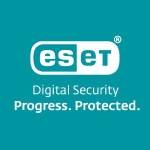What is our primary use case?
Our primary use case is anti-malware, to prevent endpoints from getting viruses.
How has it helped my organization?
Deep Instinct complements the solutions we already have. You don't need to rip and replace any antivirus or endpoint that you have. It's easy to use and it's easy to have it side-by-side with other solutions. That makes it really easy to have an additional level of endpoint protection, rather than to hassle with doing solution migration.
It helps with real-time prevention of unknown malware. I have seen several instances where, when I surf the web, Deep Instinct prevents it and quarantines it for me. The other solution that I am using doesn't pick it up. Deep Instinct prevented me from clicking on it. Otherwise, I would have been infected.
Also, the CPU consumption is low compared to what I have been using in my current environment. The footprint is a lot smaller, about a quarter of what I have now. It is very small. It doesn't use up many resources. It's only when it's running one particular type of scan that it really spikes up the resources. Otherwise, it really just stays in the background and is low on footprint.
What is most valuable?
What is commendable about Deep Instinct is that they have a single platform, regardless of whether you have Windows, Mac, or even Android phone. It's a very good platform because it's all-in-one.
In addition, it's easy, because once you deploy the endpoint, the policy comes in and there is not much to configure. You can do whatever you like, unlike other solutions where you need to explicitly create exceptions if you want to do certain things. Here, you can do anything that you want and have the assurance that Deep Instinct will catch anything that is malicious.
The malware classification is very good because it tells me, "This is most likely ransomware or a worm." In other solutions, they usually just have a flat statement saying it's a worm or just that it's a virus. That leaves it open-ended and you have to do your own investigation, put it into a sandbox and really explore it before you actually know what it is. A lot of technical or even expert knowledge is required before you can analyze it. Here, you can do it without an expert opinion. It's better laid out in the static form. It even tells you the process chain, where you know what executes and then what happens to it. If it's running something that it shouldn't, then that's potentially something bad.
What needs improvement?
I would like to see improvement in the user interface so that the user has more control. For example, it would be good if a user could change their grouping if they want to be part of another group. Or if I want to right-click and scan a specific file that I just imported, that would be helpful. Sometimes you just want to do an extra scan to make sure you're safe.
For how long have I used the solution?
Less than one year.
What do I think about the stability of the solution?
So far it has not crashed. It has not given me any problems. It's a very stable application.
What do I think about the scalability of the solution?
Because it is cloud-based, you can scale. Because it runs on AWS, ultimately the bandwidth is as big as AWS can provide, which is as big as you can imagine.
In my office there are about 20 users, but we do have customers outside our office who are also using it.
How are customer service and technical support?
So far they have been rather responsive. They have been able to give an analysis of instances or events that we have sent them, and they have been able to come back with positive results. Turnaround has been within a day.
Which solution did I use previously and why did I switch?
I work for a company that is a distributor for Deep Instinct. We use it as well as sell it. It's in our interest to be familiar with the product to sell it and support it.
How was the initial setup?
It's very easy. You can deploy to many endpoints in a very short amount of time. If you are doing it manually, it's just one simple command.
I can deploy it in a number of minutes for one or two machines. Configuring the policies takes about five minutes, and then deploying takes another five minutes or. All in all, ten minutes.
In terms of an implementation strategy, to deploy it to the masses it would be easier to go by Microsoft SCCM or any Mass Deployment Tools. You just put in a script and it will run and everyone will be done automatically. You just monitor it through the Deep Instinct dashboard. Usually, in other solutions, you won't get updates until a long time after. Here you see the overall status of every user: Are they registered? Are they deployed? Are they uninstalled? It is very intuitive.
You don't need a lot of people to maintain it. You might need two or three people to do round-the-clock standby.
What was our ROI?
I don't deal with sales, I am the technical guy, the sales engineer. I do see satisfaction from customers. They are happy that there is a solution that differentiates itself from the other solutions and is really able to complement whatever they have. I do see many customers being satisfied with this solution.
Time savings are definitely there. If you cut down the incidents, you save the time dealing with them. If you don't have to deal with them, that's a lot of time saved. And since you don't have to have people to manage the solution, that's people saved. In multiple ways there is ROI, it's definitely there.
What's my experience with pricing, setup cost, and licensing?
Because we are doing the MSSP model for Deep Instinct, we are able to get even very few licenses. Users can sign up even if they have a small office or, of course, a big office. It's really scalable and elastic in that sense.
Which other solutions did I evaluate?
Now that I have Deep Instinct, I don't know if one day I will just uninstall my current solution.
Compared to various competitors, Deep Instinct has a differentiator: It really does deep learning. Many of those doing machine-learning require the cloud. Deep Instinct is able to do it on-prem and fully self-contained. Once I install it I can even go offline or even go away from the cloud. It gives assurance that you're protected for a long time.
What other advice do I have?
Generally, as a company, we like the solution. As compared to many other solutions on the market, it has a differentiator: the deep learning, and they even share what their deep learning algorithms are. You are really assured that this thing will be able to solve real-world problems.
In terms of Deep Instinct finding any malicious files which were underscored by other solutions, I have not really gone into the details but I do see that sometimes, when I click on the link to go to Virus Total, it doesn't show up anywhere else. But I haven't really dug deep enough.
As for the extent to which it is used in our organization, it is generally used, everybody has it. The beauty about Deep Instinct is that you can set and forget it. You don't really have to deal with it, unlike other solutions where you have to constantly have an IT administrator who manages it day in, day out. Here, it's more like when and if something happens, then I take a look.
I expect we will increase our usage of it. As more users come on board, we could have it installed as part of the standard package. In general, I would like to see more people install and use Deep Instinct.
One feature that is not utilized that much is the appliance on-prem sandbox where you can generate static notices for P-Files, because people generally don't log in much to take a look. So they don't generate messages. Similarly, the upload locks are under-used, because you can do it centrally. You don't have to visit the users, you can just do it from the console which is a very awesome feature.
In terms of the rate of false positives, compared to other solutions, it depends on the environment. Some environments have more, some have less. Some don't even have any. It varies. It's more conditional. Every solution has its fair share of false positives. In some environments there are more, some there are less. If you were to put them all together in the same environment then you will be able to make an apples to apples comparison.
Disclosure: PeerSpot contacted the reviewer to collect the review and to validate authenticity. The reviewer was referred by the vendor, but the review is not subject to editing or approval by the vendor. The reviewer's company has a business relationship with this vendor other than being a customer: Reseller.


















